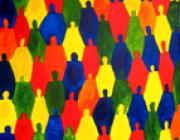Feed aggregator
Jumpstart Postdoctoral Opportunity @ FAU’s Center for Complex Systems
The Human Brain & Behavior Laboratory (HBBL) located in FAU’s Center for Complex Systems in the Charles E. Schmidt College of Science (Valery Forbes, Dean) seeks an excellent candidate to join our team to investigate the roots of biological agency (see recent article in PNAS). HBBL explores how sentient agency emerges through self-organizing, coordinative processes that span organisms and environments. The postdoctoral fellow will assist in developing next-generation interactive systems for empirical study, conducting experiments with human infants (involving 3D motion capture, EEG, eye tracking) and analyzing data. The post-holder will have freedom and capacity to develop their own scientific ideas through experimental design and preparing manuscripts and grant applications. This position offers opportunity to participate in HBBL’s active collaborations with world-leading teams in Artificial Intelligence analysis (Intelligent Systems Research Centre, Ulster University, The Institute for the Augmented Human, University of Bath), in mathematical modeling using Active Inference (Welcome Centre for Human Neuroimaging, Univ. College London) and Coordination Dynamics frameworks (Institut de Neurosciences des Systèmes, Aix Marseille University). Qualified candidates will possess advanced technical skills in relevant areas such as coding (Matlab, Python, etc.), machine learning, signal processing, mathematical modeling, EEG analysis, motion capture, and electrical engineering/robotics, as well as creativity, curiosity, and a collaborative spirit. HBBL is directed by Glenwood and Martha Creech Eminent Scholar in Science J.A. Scott Kelso. Prof. Kelso founded FAU’s Center for Complex Systems in 1985 with the goal of bringing scientists from different disciplines together in one place to understand the multiscale structure, function, and dynamics of complex biological systems, including human beings and their activities.
Please forward Letter of Interest to Dr Aliza Sloan (asloan2014@fau.edu) indicating qualifications, CV and names and contact information of 2 Referees as soon as possible. The expected salary will follow the current NIH postdoc salary scale plus benefits. The position will be for 2 years, assuming satisfactory progress in year one, and may be extended further depending on funding. Position start date is May to August 2024.
Making sense of chemical space network shows signs of criticality
Nicola Amoroso, Nicola Gambacorta, Fabrizio Mastrolorito, Maria Vittoria Togo, Daniela Trisciuzzi, Alfonso Monaco, Ester Pantaleo, Cosimo Damiano Altomare, Fulvio Ciriaco & Orazio Nicolotti
Scientific Reports volume 13, Article number: 21335 (2023)
Chemical space modelling has great importance in unveiling and visualising latent information, which is critical in predictive toxicology related to drug discovery process. While the use of traditional molecular descriptors and fingerprints may suffer from the so-called curse of dimensionality, complex networks are devoid of the typical drawbacks of coordinate-based representations. Herein, we use chemical space networks (CSNs) to analyse the case of the developmental toxicity (Dev Tox), which remains a challenging endpoint for the difficulty of gathering enough reliable data despite very important for the protection of the maternal and child health. Our study proved that the Dev Tox CSN has a complex non-random organisation and can thus provide a wealth of meaningful information also for predictive purposes. At a phase transition, chemical similarities highlight well-established toxicophores, such as aryl derivatives, mostly neurotoxic hydantoins, barbiturates and amino alcohols, steroids, and volatile organic compounds ether-like chemicals, which are strongly suspected of the Dev Tox onset and can thus be employed as effective alerts for prioritising chemicals before testing.
Read the full article at: www.nature.com
